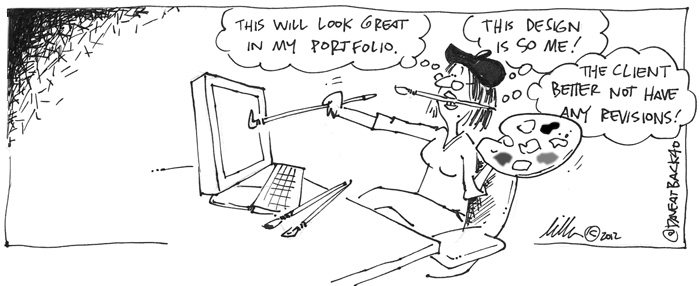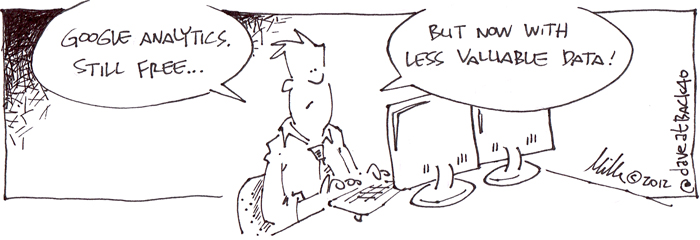Here’s a question for you designers to ponder: Are you designing for yourself, for the client, or for the user?
It’s common for new designers to get overly excited about real life design work and wrap themselves up in the design. I’m not saying the passion new designers have isn’t something we should all have, but the problem is when designers think of a design project as their own. Yes, you are working on the design, but design, unlike most art, serves a greater purpose than to entertain your own ego.
You are designing for yourself when you:
- worry whether the design will be portfolio worthy or not
- wonder if the design will be posted on every design gallery out there
- get hurt feelings when the client requests revisions
- think your opinion counts
- cannot give rationale for your design choices
- design with form inhibiting the design function
- don’t really care

Designing for yourself is a no no. So who do we design for? The client? There are positives and negatives to designing solely for the client.
You are designing for the client when you:
- listen more than talk during the design meeting
- ask questions to learn more about the client’s design goals
- take notes and review these notes before you start the design
- ask about the client’s personal preferences
- incorporate the client’s branded colors
If you design for the client you are making them happy and this is a good thing. Is it the best thing? I say no.
Even when you make your client happy in the beginning, if you neglect their users, the end result will be your client not getting the most of out their design. If your design doesn’t capture their users’ attention, help their user buy the client’s product, fill out a form, give the coupon code from an advertisement, or find what they need on the website what’s the point of your design?
Although designing for your client is important (they are the life source to your business), the best person to design for is your client’s users.
You are designing for the user when you:
- ask who the audience / customers / users will be
- put the users’ needs and wants first
- use a visual hierarchy
- make call to actions and key areas easy to locate
- are consistent with your visual language
- keep the design simple and usable
- keep the users listening, looking, and interacting
When you design for the users’ needs, your client’s business goals will line up and your design will be most effective.
Good designers don’t create art and their work is not about self expression. Good designers don’t follow every whim their client has blindly without thinking. Great designers do design to incorporate their clients foreknowledge, problem solve with client insight, planning, creativity, and the user experience in mind.
Design has never been about decorating, “making things pretty,” or demonstrating someone’s personal style. Design has a purpose. The purpose can change from project to project, but one thing should always remain the same: design for the audience.
